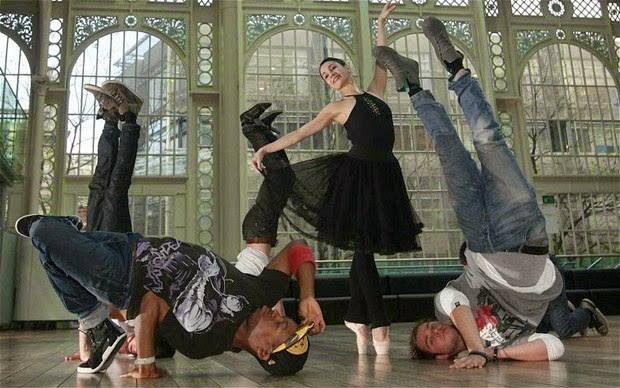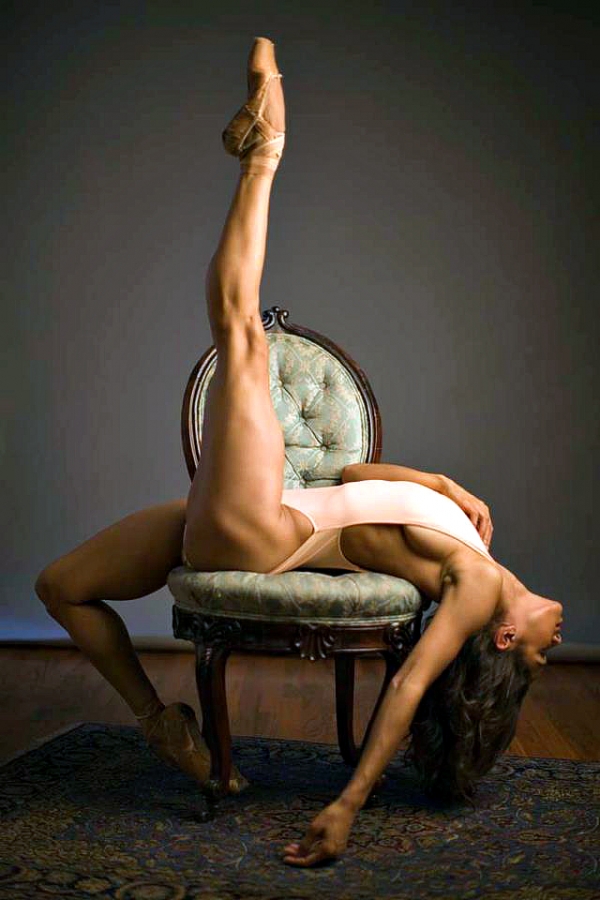Ballerinas value their turnout, and many schools that audition children check if they have the "perfect" turnout to determine their potential to become a professional dancer. Some ballet documentaries show teachers sitting on top of the hips of teenagers in attempt to increase their hip mobility, but it is very painful to watch as students cry and scream for help. Is it necessary? Can everyone obtain a perfect turnout?
Svetlana Zakharova with her perfect 180 degrees split
"CORRECT" TURNOUT
The "correct" turnout is considered a 90 + 90 degrees rotation of the legs combining to form a 180 degrees perfect straight line. However, this anatomically and biomechanically uncommon. The femur cannot turn 90 degrees: usually, the hip rotates 58%, and the knee rotates 42%. As dancers compensate the lack of turnout at the hip by increasing the turnout in the knee, they increase the risk of knee injuries by pulling the ligaments and compressing menisci.
CHARACTERISTICS OF THE JOINTS
The factors that determine the joint range of motion are the articulation of joints, ligaments, tendons, areolar tissue, the length of muscle tissue, and the response from stretch receptors. Surprisingly, muscle tissue only accounts for 10% of the joint flexibility. The first four that were listed previously accounts for 85% of the flexibility, and they are hereditary. However, the response from the stretch receptors can be manipulated. When muscles are stretched too quickly or too much, these receptors activate to tell the body to contract the muscles to avoid muscle tear. These receptors can become sensitive. By using PNF stretching techniques, we can suppress the activation to stretch muscles.
Most dancers are already flexible in terms of the muscles around the joints. What many dancers want to manipulate is the hereditary aspect of the flexibility, but training to obtain greater flexibility seems to have no effect. A study on elite-level teenagers showed clinically insignificant increase in their turnout. However, they saw slightly greater increase in younger teenagers than the older dancers. Still, there is too little evidence to support flexibility training to increase turnout.
SKELETAL INFLUENCE TO JOINT RANGE OF MOTION
The hereditary influence to the turnout has 4 factors: orientation and depth of acetabulum, shape of femoral neck, degree of femoral version, and degree of tibial version.
- Orientation and depth of acetabulum
Acetabulum is the "socket" in the ball-and-socket joint in the hip. When the socket is deep, they would be able to hold on to the femur tighter, thus more stable. The degree of turnout is increased if this acetabulum is shallow, therefore allowing the head of femur to gain more range of motion. Greater turnout also shows acetabulum that point outward instead of pointing forward.
- Shape of femoral neck
Femoral neck is referred to the portion of femur that attaches to the hip. The head of femur directly attaches to acetabulum, and the neck extends to the shaft of the femur. The turnout is increased when the neck of femur is longer. The length of the neck allows the femur to move around without bone-to-bone contact with the hipbone.
- Degree of femoral version
The neck of femur sticks out at different angles in everyone's femur. As you can observe in the picture below, when the femur is laid down, the head of the femur on the left points sideways (retroversion), whereas the head on the right side pints upward (anteroversion). This effects he range of motion in the hip joint. Greater turnout means greater retroversion of the femoral neck.
- Degree of tibial version
Similar to the femoral version, tibia also attaches at a different angle. Usually, when your knee is extended straight, tibia shifts sideways to "lock" the knee into position. The greater the angle of tibial version, the greater the turnout.
CLOSING REMARKS
Although muscles account for only 10% of the joint range of motion, you can lose flexibility very quickly if you do not stretch those muscles. Since 85% of the flexibility is hereditary, you should not stress out about your flexibility. The good thing about not being hyperflexible is that you are less prone to injuries because your limbs are attached to each other quite firmly. Most of my posts have something in common: work with what you've got. As you may know, doing a developpe with straight legs but slightly turned in hips is better than an ugly "turned-out" developpe. You are what you're born with, so instead of comparing yourself to others and hurting yourself, try to find the best way to compensate for the lack of turnout.
References
Champion, L. M., & Chatfield, S. J. (2008). Measurement of turnout in dance research: A critical review. United States: J Michael Ryan Publishing, Inc.
Deighan, M. A. (2005). Flexibility in dance. Andover: J Michael Ryan Publishing, Inc.











